
Diana Wynne Jones was a British novelist, poet, academic, literary critic, and short story writer. She principally wrote fantasy and speculative fiction novels for children and young adults. Although usually described as fantasy, some of her work also incorporates science fiction themes and elements of realism. Jones's work often explores themes of time travel and parallel or multiple universes. Some of her better-known works are the Chrestomanci series, the Dalemark series, the three Moving Castle novels, Dark Lord of Derkholm, and The Tough Guide to Fantasyland.

Chelsea Quinn Yarbro is an American writer. She is known for her series of historical horror novels about the vampire Count Saint-Germain.

Rocannon's World is a science fiction novel by American writer Ursula K. Le Guin, her literary debut. It was published in 1966 as an Ace Double, along with Avram Davidson's The Kar-Chee Reign, following the tête-bêche format. Though it is one of Le Guin's many works set in the universe of the technological Hainish Cycle, the story itself has many elements of heroic fantasy. The hero Gaveral Rocannon encounters lords who live in castles and wield swords, and other races much like fairies and gnomes, in his travels on a backward planet.

Interzone is a British fantasy and science fiction magazine. Published since 1982, Interzone is the eighth-longest-running English language science fiction magazine in history, and the longest-running British science fiction (SF) magazine. Stories published in Interzone have been finalists for the Hugo Awards and have won a Nebula Award and numerous British Science Fiction Awards.

Elements of the supernatural and the fantastic were an element of literature from its beginning. The modern genre is distinguished from tales and folklore which contain fantastic elements, first by the acknowledged fictitious nature of the work, and second by the naming of an author. Works in which the marvels were not necessarily believed, or only half-believed, such as the European romances of chivalry and the tales of the Arabian Nights, slowly evolved into works with such traits. Authors like George MacDonald (1824–1905) created the first explicitly fantastic works.
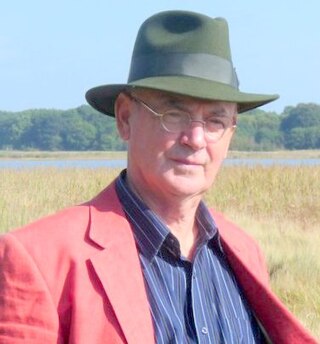
Garry Douglas Kilworth is a British science fiction, fantasy and historical novelist, and a former Royal Air Force cryptographer.

Robert Paul Holdstock was an English novelist and author best known for his works of Celtic, Nordic, Gothic and Pictish fantasy literature, predominantly in the fantasy subgenre of mythic fiction.

Mythago Wood is a fantasy novel by British writer Robert Holdstock, published in the United Kingdom in 1984. Mythago Wood is set in Herefordshire, England, in and around a stand of ancient woodland, known as Ryhope Wood. The story involves the internally estranged members of the Huxley family, particularly Stephen Huxley, and his experiences with the enigmatic forest and its magical inhabitants. The conception began as a short story written for the 1979 Milford Writer's Workshop; a novella of the same name appeared in the September 1981 edition of The Magazine of Fantasy & Science Fiction.
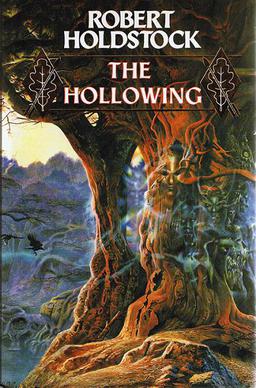
The Hollowing is a fantasy novel by British writer Robert Holdstock, the third in the Mythago Wood series written. It was originally published in 1993. The title refers to a magical pathway, or hollowing, an archaic English term for a sunken lane or hollow-way. The Hollowing was inspired by the story Sir Gawain and the Green Knight.

The Cherryh Odyssey is a 2004 collection of essays by various academics, critics and authors about American Hugo Award-winning science fiction and fantasy author, C. J. Cherryh. It was edited by author and academic, Edward Carmien, and was published by Borgo Press, an imprint of Wildside Press as part of its Author Study series. Locus Magazine put the book on its "2004 Recommended Reading List", and Carmien received a nomination for the 2005 Locus Award for Best Non-fiction book for The Cherryh Odyssey.
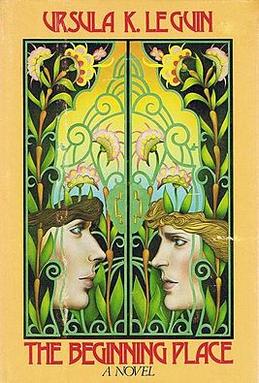
The Beginning Place is a short novel by American writer Ursula K. Le Guin, written in 1980. It was subsequently published under the title Threshold in 1986. The story's genre is a mixture of realism and fantasy literature. The novel's epigraph "What river is this through which the Ganges flows?" is quoted from Jorge Luis Borges. The novel has been subject to critical studies comparing it to C.S. Lewis' The Chronicles of Narnia, Lewis Carroll's Through the Looking-Glass and William Shakespeare's As You Like It.

The Bone Forest is a collection of fantasy short stories by British writer Robert Holdstock, published in 1991 (UK) and 1992 (US). It opens with a novella of the same name, followed by seven short stories. The novella is a prequel to the entire Mythago Wood cycle. According to the author it was written "to fill in the background and back-story to Mythago Wood" at the request of a screenwriter who was working on a planned movie version of Mythago Wood.

Gate of Ivory, Gate of Horn is a fantasy novel by British author Robert Holdstock. It was originally published in the United States in 1997 The story is a prequel to Mythago Wood and explores Christian Huxley's quest into Ryhope Wood and the apparent suicide of his mother, Jennifer Huxley. The title of the book refers to the gates of horn and ivory described in both Homer's Odyssey and Virgil's Aeneid.
This is a bibliography of fantasy author Robert Holdstock.
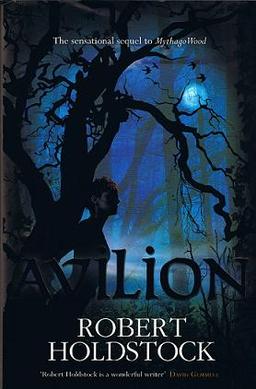
Avilion is a fantasy novel by British author Robert Holdstock. It was published in the United Kingdom on July 16, 2009. It is his first Ryhope wood novel since Gate of Ivory, Gate of Horn was published in 1997. Avilion is Tennyson's term for Avalon in Idylls of the King. Avilion is described by Tennyson as an island valley with ideal weather and fertile land.
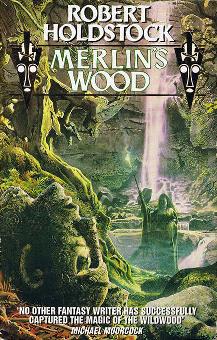
Merlin's Wood; or, The Vision of Magic is a short novel by British writer Robert Holdstock, first published in the United Kingdom in 1994. The novel is considered part of the Mythago Wood cycle, but takes place in Brittany, France instead of Herefordshire, England. The work has all new characters and focuses on the mythical birthplace and burial site of Merlin, the magical wood Brocéliande. Brocéliande is a smaller version of Ryhope wood where British myth predominates.
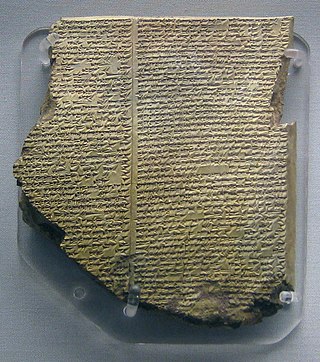
Immortality is a common theme in fiction. The concept has been depicted since the Epic of Gilgamesh, the oldest known work of fiction. Originally appearing in the domain of mythology, it has later become a recurring element in the genres of horror, science fiction, and fantasy. For most of literary history, the dominant perspective has been that the desire for immortality is misguided, albeit strong; among the posited drawbacks are ennui, loneliness, and social stagnation. This view was challenged in the 20th century by writers such as George Bernard Shaw and Roger Zelazny. Immortality is commonly obtained either from supernatural entities or objects such as the Fountain of Youth or through biological or technological means such as brain transplants.

Nebula Science Fiction was the first Scottish science fiction magazine. It was published from 1952 to 1959, and was edited by Peter Hamilton, a young Scot who was able to take advantage of spare capacity at his parents' printing company, Crownpoint, to launch the magazine. Because Hamilton could only print Nebula when Crownpoint had no other work, the schedule was initially erratic. In 1955 he moved the printing to a Dublin-based firm, and the schedule became a little more regular, with a steady monthly run beginning in 1958 that lasted into the following year. Nebula's circulation was international, with only a quarter of the sales in the United Kingdom; this led to disaster when South Africa and Australia imposed import controls on foreign periodicals at the end of the 1950s. Excise duties imposed in the UK added to Hamilton's financial burdens, and he was rapidly forced to close the magazine. The last issue was dated June 1959.
Henrietta Dorothy Everett who wrote under the pen name Theo Douglas was a British novelist who was popular during her lifetime but who is now largely forgotten. Her identity was revealed in 1910 but little is known of her life.

Encyclopedia of Science Fiction is a 1978 book of essays about the science fiction genre, largely as a literary form but also covering cinema, TV and illustration.


















